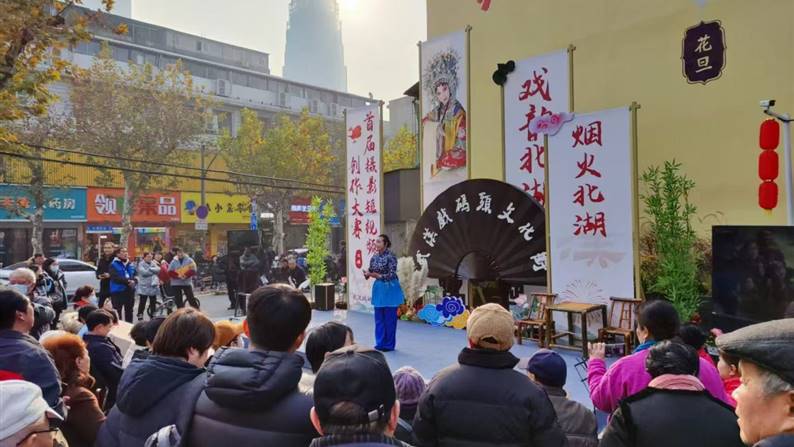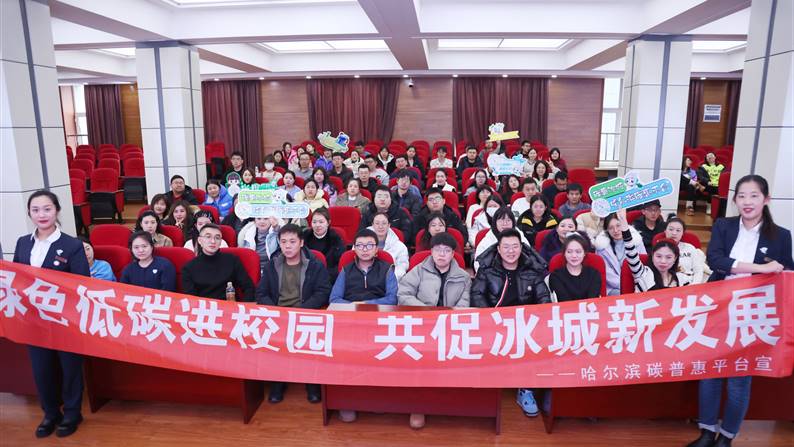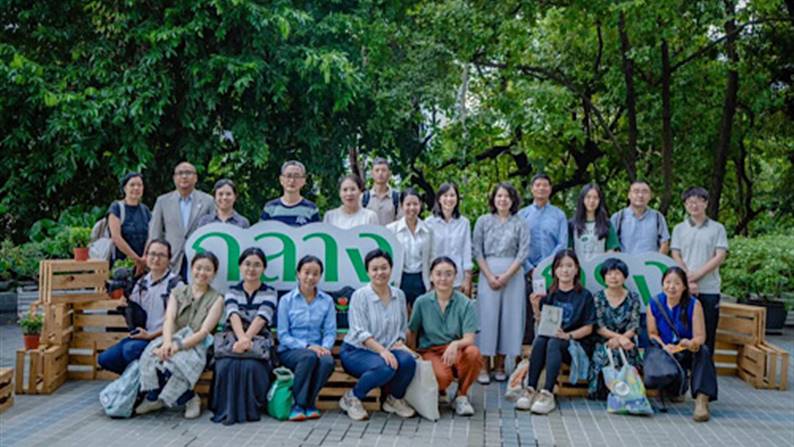

The global "climate battle" is underway, with countries around the world making concerted efforts to tackle climate change. On the fifth anniversary of the Paris Agreement, 28 countries have already committed to carbon neutrality. At the same time, 5G, AI, cloud and other technologies are enabling thousands of industries and accelerating the industrial intelligent and digital transformation. We are in the era of light storage to replace fossil energy, so where will the future of new energy?
On March 17, Huawei combined with technical experts and consulting firms, global energy think tank depth of communication, based on the lower LCOE, friendly, smart grid integration, safe and credible four value dimensions to be released for 2025 intelligent photovoltaic ten big trend, find path for 14 or 15, provide strategic reference for the development of new energy for the next step.
See the trend, clear the direction, and turn the future into the present.
Trend 1: High pressure and high density
Increasing system voltage is an
important way to reduce LCOE. From 600V-1000V-1500V, the future will move to
higher voltage. As the voltage of the system increases, the subarray becomes
larger and larger, from 1MW to 8.8MW, and becomes super subarray, which further
reduces the LCOE.
With the development of silicon carbide, gallium nitride materials, chip heat dissipation, and topology architecture technology, the power density is improved, and the PV KWH cost is further reduced. By 2025, the inverter power density will be increased by more than 50%.
Trend 2: Full modularity
The photovoltaic parity has entered the market operation, and the life cycle of the power station and the subsidy period are decoupled. Modularity will support longer plant lifecycles and help reduce LCOE by 25%.
The key core components such as inverters, PCS, and energy storage are equipped with standard interfaces between devices for flexible capacity expansion and rapid deployment. Regardless of the AC or DC side, the inverter is equipped with an energy storage interface for future evolution. At the same time, with the increasing scale and complexity of photovoltaic power stations, the cost of the traditional mode of expert maintenance is too high. Modular design can achieve no expert maintenance, greatly reduce operation and maintenance costs, improve system availability. Full modular design will become the mainstream of the industry.
Trend 3: actively supporting the power grid
The increase of new energy penetration leads to the decrease of power grid intensity. In the next five years, photovoltaic power stations must gradually evolve from adapting to the power grid to supporting the power grid.
With the rapid development of new energy in the world, the adaptability standards of new energy grid are also evolving, which puts forward higher requirements to support the stability of power grid. Countries with high penetration of new energy, such as Germany and Australia, are proposing new modeling and stringent grid standards. Our country's newly issued 2019 GB/T37408 technical specifications are also advancing with The Times, especially strengthen the high wear active power stability, high and low voltage crossing ability, frequency adaptability and other grid adaptability requirements, set a higher threshold. In the future low SCR power grid environment, photovoltaic inverters need to have more accurate grid-connected algorithm.
In Australia, a country with the most stringent power grid standards in the world, Huawei SUN2000-196KTL products have fully supported this power grid standard feature, and can be connected to the grid stably in a harsh power grid environment. In the future, the supporting capacity of SCR for power grid will be further improved to 1.2.
Trend 4: Light storage in one
Build smart green generators to help photovoltaic become the main energy source.
The combination of optical storage can change the photovoltaic power station from current source to voltage source, and realize synchronous machine characteristics such as virtual inertia with the optical storage cooperative control algorithm. The technical indicators of photovoltaic power generation are close to thermal power, which can be stored and controlled, and further enhance the power grid. At the same time, energy storage should solve the problems of safety and life, and ensure that the battery utilization rate is maximized during the battery life cycle, which is the development direction of future energy storage power stations.
It is expected that the proportion of light storage symbiosis will reach more than 30% by 2025.
Trend 5: Total digitization
The integration of digital technology and photovoltaic technology makes operation and maintenance, production management and asset management minimalist, intelligent and efficient.
Digitization is the foundation of intelligence. With the rapid evolution of 5G, cloud and other digital technologies, it is expected that by 2025, more than 90% of power stations will be fully digitized, making it possible to manage photovoltaic power stations in a minimalist, intelligent and efficient way, turning a dumb power station into an organic intelligent life.
Trend 6: AI efficiency
AI will replace the functions of experts, enabling the system to cooperate and optimize autonomously, creating infinite possibilities.
Artificial intelligence AI power photovoltaic, from the Internet of everything to everything intelligence. Benefiting from artificial intelligence and Internet of Things technology, by integrating massive expert experience and continuous self-learning, algorithms, computing power and data play the maximum role in computing, AI will largely replace operation and maintenance experts in diagnosis and decision making. Through the intelligent tracking algorithm, the components, brackets and inverters work together to find the best Angle and release the maximum potential. Intelligent IV diagnosis, accurate fault location, reduce O&M workload from "month" to "minute". Technologies such as UAV aerial inspection power station, cleaning robot cleaning components, intelligent security and face recognition enable photovoltaic power stations to continuously improve system design optimization, fault diagnosis, optical storage collaboration, intelligent inspection, intelligent cleaning, machine vision, and comprehensively improve power generation efficiency and rebuild operation and maintenance experience. This helps improve plant productivity and safety. It is expected that 70% of photovoltaic power stations will apply AI technology in 2025.
Trend 7: Virtual power stations
Co-managed virtual power stations will participate in power system scheduling and trading, and become a new growth engine for distribution.
The large-scale application of ICT technologies such as 5G, blockchain, and cloud services in distributed power stations forms a co-managed Virtual PowerPlant to participate in the dispatching, trading and auxiliary services of the power system. In the next 5 years, the development of virtual power station technology will spawn new business models and new market players in the distributed PV scenario, becoming the new growth engine of distributed. By 2025, 80% of household PV systems are expected to be connected to various VPP networks.
Trend 8: Refactoring Extreme security
Module/group cascade monitoring, intelligent shutdown, active safety protection (AFCI), will become the standard configuration of photovoltaic power stations, and form a unified industry standard.
Active safety is the cornerstone for PV to become the main energy source. "AI intelligent arc protection" is the first time for the industry to integrate AI algorithm into AFCI, which comprehensively guarantees the safety of distributed PV through more accurate arc detection and faster fault protection. In the next 5 years, 0V voltage quick shutdown (RSD), arc Active protection (AFCI) and cluster intelligent shutdown (RSD) will become standard components on distributed roofs and form international standards in the industry.
Trend 9: Integrated Smart energy
The energy mix is shifting to a new generation of integrated energy systems. From a management point of view, an integrated energy model will effectively connect production and consumption, helping to achieve carbon neutrality and greater value for distribution. Integrated energy is an autonomous system of source-network-charge-storage integration. It needs to take ICT infrastructure as the base, and improve energy utilization efficiency and reduce energy costs through integration and innovation through platform + ecological concept. In 2025, hyper-converged energy architectures will be on the way.
Trend 10: Secure and trusted
Network security risks and user
privacy security requirements of photovoltaic power stations are becoming
increasingly strict. In 2025, reliability, availability, security, resilience,
and privacy of systems will become essential requirements.
On the hardware side, in addition to highly reliable design and manufacturing, predictive maintenance is strengthened to tamp reliable foundations. The layered defense is focused on the software side to realize the layered control and layered defense of the software, so that the software is more secure and reliable and the photovoltaic industry is more secure and reliable. The ability of safety and trustworthiness has become a necessary requirement for photovoltaic power stations.
Understand the trend, clear direction. Huawei Smart PV will continue to adhere to the attitude of openness and cooperation, and work with industry customers, partners and third-party organizations to jointly explore innovation and win a new era of digital energy.
全球“气候保卫战”正在打响,世界各国齐心协力应对气候变化。正值《巴黎协定》发布五周年之际,当前已有28个国家相继承诺“碳中和”目标。 与此同时,5G、AI、云等技术也正在使能千行百业,加速行业智能化、数字化转型。我们正置身于光储替代化石能源的时代大浪潮中,那么新能源未来将走向何方?
3月17日,华为携手全球技术专家、咨询公司、能源智库深度沟通,立足更低LCOE,电网友好、智能融合、安全可信四个价值维度做出预测,发布了面向2025的智能光伏十大趋势,为十四五寻找路径,为新能源下一步 发展提供战略参考。
洞察趋势,明晰方向,把未来变为现在。
趋势一:高压高密
系统电压提升是LCOE降低的重要途径。从600V-1000V-1500V,未来将走向更高电压。系统电压提升的同时,子阵越来越大,从1MW到8.8MW,变成超级子阵,进一步降低LCOE。
随着碳化硅、氮化镓材料、芯片散热、拓扑架构技术的发展,提升功率密度的同时,光伏度电成本进一步下降。到2025年将实现逆变器功率密度将提升50%以上。
趋势二:全模块化
光伏平价进入市场化运作,电站生命周期与补贴年限解耦。模块化将支撑更长电站生命周期,助力LCOE降低25%。
逆变器、PCS、储能等关键核心部件,设备间采用标准接口,灵活扩容,快速部署;逆变器不管交流还是直流侧,具备储能接口,面向未来演进。同时随着光伏电站规模和复杂度越来越高,专家上站维护的传统模式成本过高。模块化设计可以实现免专家维护,极大降低运维成本、提升系统可用度。全模块化设计将成为行业主流。
趋势三:主动支撑电网
新能源渗透率提高导致电网强度下降。未来5年,光伏电站必须从适应电网逐步向支撑电网演进。
随着全球新能源的迅猛发展,新能源电网适应性标准也在不断演进,对支撑电网稳定性提出更高要求。德国,澳大利亚等新能源渗透率高的国家,都提出了新的建模和严苛的电网标准规范。我们国家最新发布的2019新国标GB/T37408技术规范也与时俱进,特别强化了高穿有功稳定性、高低电压穿越能力、频率适应性等电网适应性要求,设定了更高的门槛。未来低SCR电网环境下,光伏逆变器需具备更精准的并网算法。
在澳洲,全球最严苛的电网标准国家,华为SUN2000-196KTL产品,已经完全可以支撑这一电网标准特性,在恶劣电网环境下,稳定并网。未来SCR对电网的支撑能力还会进一步提升,达到1.2。
趋势四:光储一体
打造智能绿色发电机,助力光伏成为主力能源。
光储的结合,能够使光伏电站从电流源变身为电压源,以光储协同控制算法,实现虚拟惯量等同步机特性,光伏发电技术指标向火电靠拢,可储可控,进一步增强电网。同时储能要解决安全、寿命等问题,保证在电池生命周期内,电池利用率最大化,这是未来储能电站的发展方向。
预计到2025年,光储共生比例将达到30%以上。
趋势五:全面数字化
数字技术与光伏技术融合,使运维、生产管理和资产管理变得极简、智能、高效。
数字化是智能化基础。随着5G、云等数字化技术快速演进,预计2025年将有90%以上的电站实现全面数字化,让光伏电站极简、智能、高效的管理成为可能,从一个哑电站变成一个有机的智能生命体。
趋势六:AI增效
AI将代替专家职能,使能系统自主协同优化,创造无限可能。
人工智能AI赋能光伏,从万物互联到万物智能。受益于人工智能及物联网技术,通过集成海量的专家经验和不断的自学习,让算法、算力、算据在计算中发挥最大作用,AI将很大程度上代替运维专家进行诊断决策。通过智能跟踪算法,让组件、支架、逆变器协同运行,找到最佳角度,释放最大潜力。智能IV诊断,精准定位故障,将运维工作量从“月”降低到“分钟”。无人机空中巡检电站、清洗机器人清洗组件、智能安防和人脸识别等技术,使光伏电站不断完善系统设计优化、故障诊断、光储协同、智能巡检、智能清洗、机器视觉,全面提升发电效率和重构运维体验。从而助力电站生产力和安全性提升。预计,2025年光伏电站应用AI技术比例达到70%。
趋势七:虚拟电站
协同管理的虚拟电站将参与电力系统调度及交易,成为分布式新的增长引擎。
5G、区块链、云服务等ICT技术的大规模应用于分布式电站,组成协同管理的虚拟电站(Virtual PowerPlant)参与到电力系统的调度、交易与辅助服务中。未来5年,虚拟电站技术的发展会在分布式光伏场景中衍生出新的商业模式,以及新的市场参与者,成为分布式新的增长引擎。预计2025年,80% 的户用光伏系统会接入各种VPP网络。
趋势八:重构极致安全
组件/组串级监控及智能关断、主动安全防护(AFCI),将成为光伏电站的标配,并形成统一的行业标准。
主动安全是光伏成为主力能源的基石。“AI智能电弧防护”,是行业首次将AI算法融入AFCI,通过更精准的电弧检测,更迅速的故障保护,全面保障分布式光伏的安全。未来5年,屋顶0V电压快速关断(RSD)、电弧主动防护(AFCI)、组串智能关断(RSD)在分布式屋顶将成为标配,并形成行业国际标准。
趋势九:综合智慧能源
能源结构转向新一代综合能源系统。从管理角度看,综合能源模式会有效拉通生产和消费,助力实现碳中和,推广价值更高。综合能源是源-网-荷-储一体化的自治系统,需要以ICT基础设施为底座,通过平台+生态理念,融合创新,提升能源利用效率,降低能源成本。2025年,超融合能源架构会大行其道。
趋势十:安全可信
光伏电站网络安全风险与用户隐私安全要求与日俱增,愈发严格。2025年系统的可靠性、可用性、安全性、韧性、隐私性,将成为必要要求。
在硬件端除了高可靠设计及制造外,同时加强预测性维护,夯实可靠地基;在软件端重点投入分层级防御,实现软件的分层可控、分层防御,使软件更加安全可靠,使光伏产业更加安全可靠。安全可信能力成为光伏电站的必要要求。

打造绿色低碳街区,奏响幸福美好生活最强音
10-18 · 来源:湖北省武汉市江汉区北湖街道环保社区 · 作者:湖北省武汉市江汉区北湖街道环保社区

“碳惠冰城”:东北首个市级平台的“双碳”实践与冰城示范
10-15 · 来源:哈尔滨产权交易所有限责任公司 · 作者:哈尔滨产权交易所有限责任公司

亚洲气候治理新篇章:中国公益代表团参访曼谷气候周,探索跨区域合作新路径
10-10 · 来源:公益时报 · 作者:公益时报